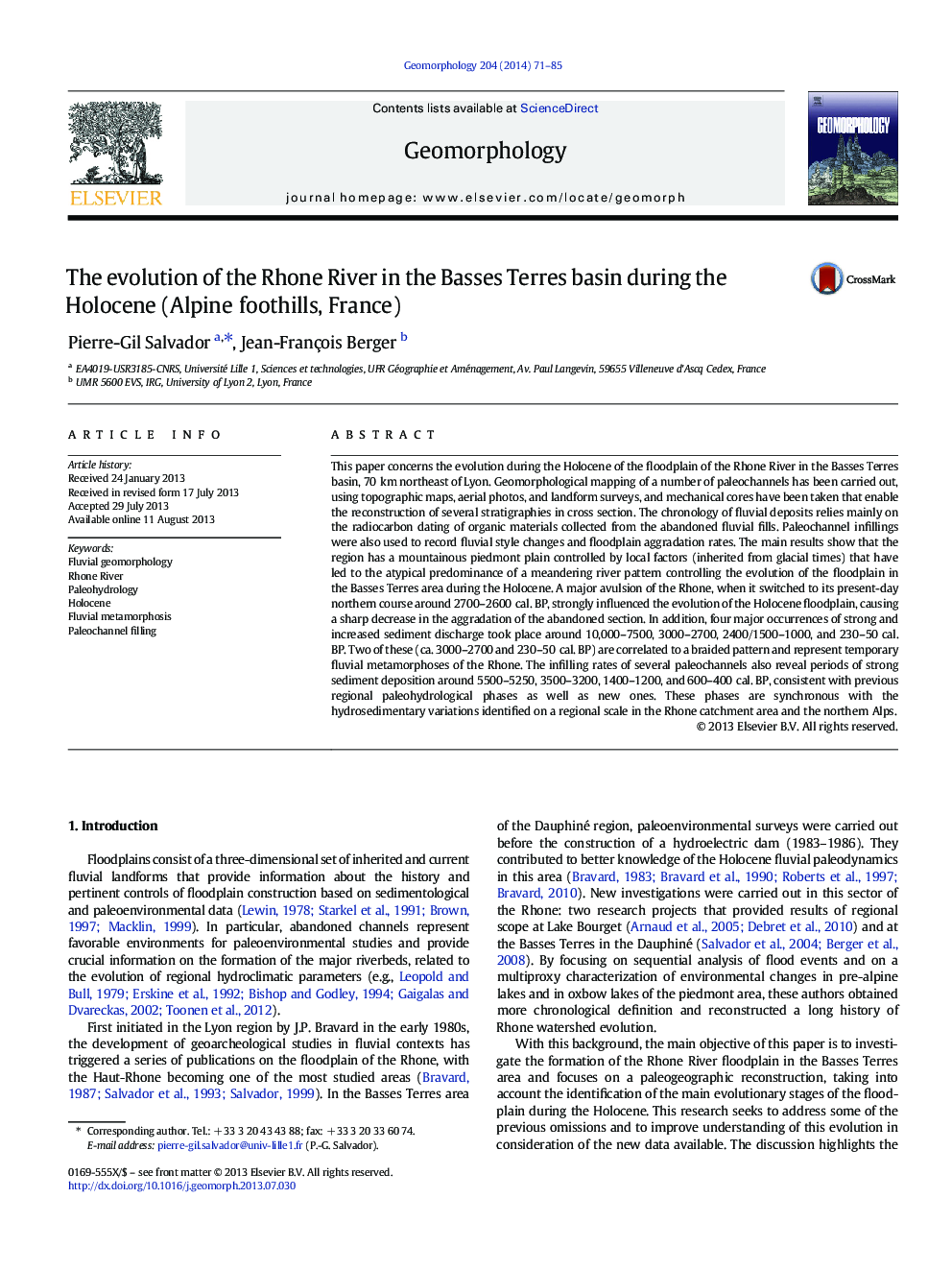| کد مقاله | کد نشریه | سال انتشار | مقاله انگلیسی | نسخه تمام متن |
|---|---|---|---|---|
| 6432712 | 1635445 | 2014 | 15 صفحه PDF | دانلود رایگان |

- Paleoenvironmental investigations have been carried out in the Rhone floodplain.
- Nine major phases in the evolution of the Holocene floodplain are identified.
- Four major occurrences of strong hydrosedimentary inputs are identified.
- A major avulsion of the Rhone River is identified around 2700-2600Â cal. BP.
- Two fluvial metamorphoses from meandering to braiding are identified.
This paper concerns the evolution during the Holocene of the floodplain of the Rhone River in the Basses Terres basin, 70Â km northeast of Lyon. Geomorphological mapping of a number of paleochannels has been carried out, using topographic maps, aerial photos, and landform surveys, and mechanical cores have been taken that enable the reconstruction of several stratigraphies in cross section. The chronology of fluvial deposits relies mainly on the radiocarbon dating of organic materials collected from the abandoned fluvial fills. Paleochannel infillings were also used to record fluvial style changes and floodplain aggradation rates. The main results show that the region has a mountainous piedmont plain controlled by local factors (inherited from glacial times) that have led to the atypical predominance of a meandering river pattern controlling the evolution of the floodplain in the Basses Terres area during the Holocene. A major avulsion of the Rhone, when it switched to its present-day northern course around 2700-2600Â cal. BP, strongly influenced the evolution of the Holocene floodplain, causing a sharp decrease in the aggradation of the abandoned section. In addition, four major occurrences of strong and increased sediment discharge took place around 10,000-7500, 3000-2700, 2400/1500-1000, and 230-50Â cal. BP. Two of these (ca. 3000-2700 and 230-50Â cal. BP) are correlated to a braided pattern and represent temporary fluvial metamorphoses of the Rhone. The infilling rates of several paleochannels also reveal periods of strong sediment deposition around 5500-5250, 3500-3200, 1400-1200, and 600-400Â cal. BP, consistent with previous regional paleohydrological phases as well as new ones. These phases are synchronous with the hydrosedimentary variations identified on a regional scale in the Rhone catchment area and the northern Alps.
Journal: Geomorphology - Volume 204, 1 January 2014, Pages 71-85